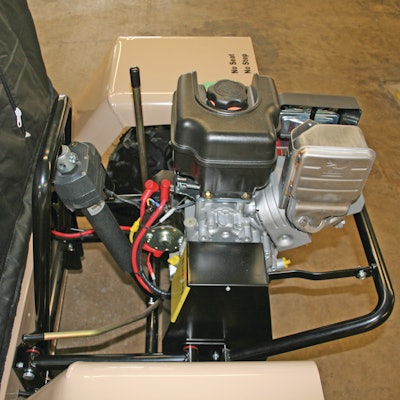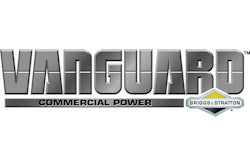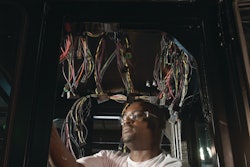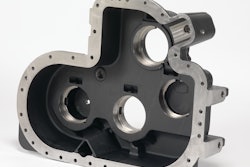The Saturday morning when I visited a boat dealer near Madison, WI, it was 32 degrees warmer than it had been the day before. However, the welcomed heat wave — it climbed to 10 F just before noon — wasn't enough to reverse the effect cold weather had on area rivers and lakes.
The dealer, Inland Boat Works in Monona, started in the 1940s as a manufacturer of wooden power boats. It was making fiberglass boats when production ended in the early 1970s. Today, Inland sells new boats and accessories from the same location. Down the ramp from Inland's service shop, housed in a restored Quonset hut, the Yahara River still flows between Lake Monona and Lake Waubesa, but because it's January it does so under ice and snow.
Boat sales can be slow during Wisconsin's winter months. This year, Inland has something new advertised on area billboards. The dealer is attracting serious fisherman who aren't going to let several inches of ice lay between them and quality time on the lake.
Parked in the showroom among brightly colored boats is the Wilcraft amphibious ice fishing vessel. A combination of an ATV and a jon boat, the Wilcraft was designed for a specific purpose. But as often happens when brand-new machines are in the hands of end users, its creator and its dealers are discovering that its usefulness will not be limited to fishing trips on frozen lakes.
Necessity, mother of invention
Tom Roering, president of Wilcraft manufacturer Multifarious Inc., is an avid ice fisherman living near Minnesota's Twin Cities. In 1998, his permanent ice house was falling apart. He wanted to replace it with something that would be more mobile and help keep his young kids safe while on the ice.
"I wanted a lightweight machine in order to extend the ice fishing season," says Roering. "But, over a few years, it evolved into a self-contained ice-fishing vehicle complete with retractable wheels and a pop-up enclosure."
The first machines were built for family use. But as the concept evolved and other sportsmen saw Roering's machine, he decided to become a manufacturer, in addition to working as a floor installer. A production prototype was unveiled in 2004. The concept was awarded a patent in February 2008.
The first few weeks of the season — "first ice" — is the best time for angling. As winter wears on, the oxygen level in the water declines. Walleyes and other fish become sluggish and descend to deeper levels where some oxygen remains.
Early ice is also dangerous; the local newspaper often covers the season opener when a snowmobile breaks through the thin veneer of frozen water.
Smart anglers never assume the ice is safe, regardless of the date. "Safety was the focus of the project early on," says Roering. "The Wilcraft floats — it's not just buoyant. When it's in the water, it is like being in a boat."
Exerting ground pressure less than that of a fully ladened walking fisherman, the Wilcraft can safely traverse early ice. If the ice collapses underneath, not only does the Wilcraft float, its design helps it safely return to the ice.
In late February and March, good fishing returns to the frozen lakes. Walleyes become more active and aggressive when they sense spawning is a few weeks away. "Later in the season, particularly in large bodies of water, the shoreline melts first," says Mike Locke, a sales representative at Inland Boat Works. "The thicker ice out on the ice is still safe, so you need planks to cross on foot or with a four-wheeler. With the Wilcraft you can go right across the open water."
Watch the Amphibious Ice Fishing video to see a demo of the Wilcraft machine.


















